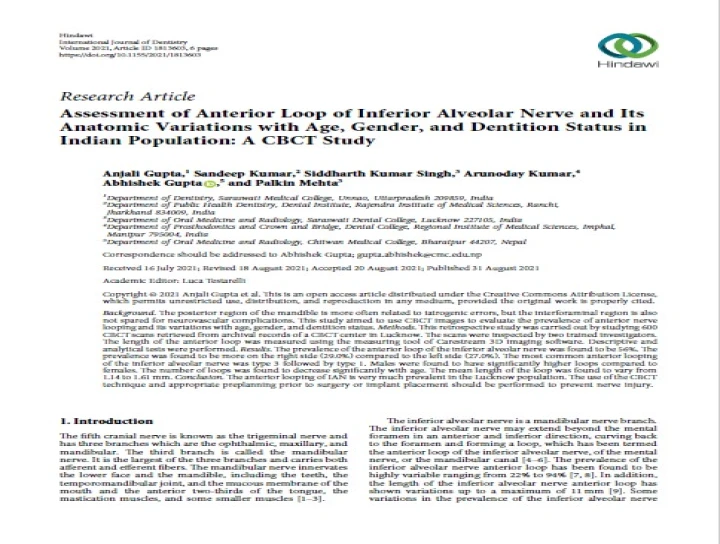
Authors- Siddharth Kumar Singh, Palkin Mehta
The posterior region of the mandible is more often related to iatrogenic errors, but the interforaminal region is also
not spared for neurovascular complications. (is study aimed to use CBCT images to evaluate the prevalence of anterior nerve
looping and its variations with age, gender, and dentition status. Methods. (is retrospective study was carried out by studying 600
CBCTscans retrieved from archival records of a CBCTcenter in Lucknow. (e scans were inspected by two trained investigators.
(e length of the anterior loop was measured using the measuring tool of Carestream 3D imaging software. Descriptive and
analytical tests were performed. Results. (e prevalence of the anterior loop of the inferior alveolar nerve was found to be 56%. (e
prevalence was found to be more on the right side (29.0%) compared to the left side (27.0%). (e most common anterior looping
of the inferior alveolar nerve was type 3 followed by type 1. Males were found to have significantly higher loops compared to
females. The number of loops was found to decrease significantly with age. The mean length of the loop was found to vary from
1.14 to 1.61 mm. Conclusion. The anterior looping of IAN is very much prevalent in the Lucknow population. (e use of the CBCT
technique and appropriate preplanning prior to surgery or implant placement should be performed to prevent nerve injury.


No Any Replies to “Assessment of Anterior Loop of Inferior Alveolar Nerve and Its Anatomic Variations with Age, Gender, and Dentition Status in Indian Population: A CBCT Study”
Leave a Reply